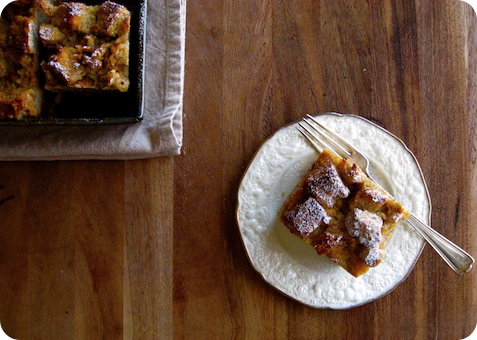In their dusky depth
 Thursday, August 6, 2009 at 10:01PM
Thursday, August 6, 2009 at 10:01PM The other day, I met a chair. It is solid walnut, and exceedingly handsome, with four sturdy legs and a softly-curved back that cradles the body and encourages the spine to recline. It is worn in places, with dings and nicks from days upon years spent in service.
It is a chair that should belong to a studious sort, one predisposed to a woolen wardrobe, layers upon layers of gray and black. The sort of owner that bears the weight of a long scarf wound endlessly about the neck.
One that would ponder in this chair. Consider. Discuss obscure literature and drink very strong coffee. By candlelight, most likely, or at most an antiquated fixture that would offer the dimmest circle of golden light.
It is a chair that encourages me to change my name, to cast off the trappings of the world, to instead choose to "live in a garret and eat black bread". It would be quite theatrical. And I would be quite comfortable.
That is, as long as you understand that by garret I mean our den, and by black bread I mean bittersweet chocolate scones. This chair inspires scones. Demands them, even.
Slightly austere in their sweetness, and comparitively meager in their fat, these scones revel in their dusky depth. The tenderness of their crumb is mitigated by the edge of cocoa and shot through with bitter chocolate.
You can call me Nina if you'd like.
Bittersweet Chocolate Scones
Think of these as the biscotti of the scone world; slightly sandy textured and subtle in their sweetness, and pair well with coffee and tea.
Ingredients
2 cups all purpose flour
1/3 cup unsweetened cocoa powder
1/3 cup granulated sugar, plus additional for sprinkling
2 teaspoons baking powder
1/4 teaspoon salt
8 tablespoons (1 stick) cold unsalted butter, diced
1 large egg plus one egg white for glazing
3/4 cup 18% cream, chilled
1 teaspoon vanilla extract
4 ounces bittersweet chocolate, chopped
Preheat oven to 400°F (200°C). Use parchment paper to line a standard baking sheet and set aside.
In the bowl of a stand mixer with the paddle attachment, combine the flour, cocoa powder, sugar, baking powder and salt. On the machine's lowest setting, cut in the chilled butter until the mixture resembles course meal. The butter should be in small pieces approximately the size of peas. Alternatively, sift together the dry ingredients in a medium bowl, then cut in the chilled butter with two knives or a pastry cutter. As before, the blend should be rough, with uneven pieces of butter still visible.
Lightly whisk together the whole egg, cream and vanilla. With the machine running still on low (or stir), pour the liquids slowly into the flour and butter mixture, stirring until just combined. Small bits of butter should still be visible, but almost all the flour should be incorporated. With the mixer still on low, stir in the chocolate. If proceeding by hand, use a wooden spoon or silicone spatula to fold and turn the flour mixture to incorporate the liquids, then stir in the chocolate. Do not overmix.
Turn the dough out onto a lightly floured surface. Working quickly, gently knead the dough, folding and pressing gently until fairly smooth. Divide the dough into three, and shape each ball of dough into a 4" round about 3/4"-1" thick. Cut each round into four wedges, and place on the prepared baking sheet. Once finished, brush each scone with the egg white and sprinkle with extra granulated sugar.
Bake in preheated oven for about 15 minutes, or until the tops are matte and the cut sides look flaky and dry. When fully cooked, scones should feel light for their size and sound almost hollow when tapped underneath. Cool on a wire rack for at least 5 minutes. Best served warm.
Makes 12 smallish scones.
Notes:
• As mentioned, these scones are only modestly sweet. For a more indulgent treat, substitute the bittersweet chocolate for a semisweet or even a milk chocolate. I encourage cutting up bar chocolate rather than morsels as bar chocolate is free from the stabilizers in chips that help them keep their shape. The uneven shards of chocolate will slightly melt into the dough, turning into little puddles of oozing darkness.
• For added richness, substitute 1/2 cup heavy cream for the 18% and use 2 large eggs instead of 1. In this variation you may need more flour for the dough to come together. Add it sparingly, a bit of stickiness to the dough is good.






















